🔗 CFP: Climate Storytelling 2075 Cohort 3 application now open! Due January 4, 2026.
radically imagining
climate futures
Climate futures thrive when we collectively imagine & shape them.
We support frontline youth crafting compelling, future-oriented climate narratives that inspire civic action and cultural change.
How do you envision a desirable climate future in the year 2075?
We invite you to explore this digital anthology in response to this question, with two volumes of solutions-driven artworks by young storytellers speculating, and making tangible, a positive climate future 50 years away.
Hear from 5 artists of the 2025 cohort of climate storytellers, speaking from the “Imagining Climate Futures” gallery exhibition of their cohort’s work on display at the Queens Council on the Arts, NYC.
This artist panel took place November 20th, 2025 in NYC, facilitated by journalist Yessenia Funes.
Climate Storytelling 2075: Anthology Vol. II
-
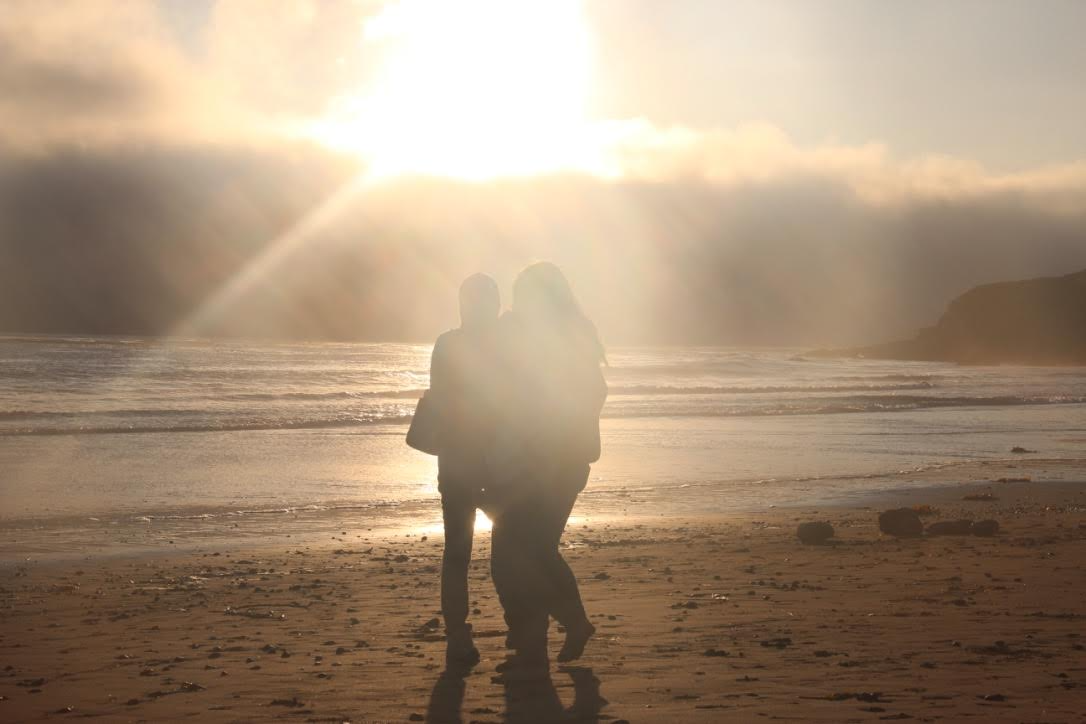
Letters on Care
"Letters on Care" is an epistolary story written in the form of letters between two sisters, separated in childhood by their parents' return migration, in the year 2075. The piece alternates between memories of their past, as well as vignettes from their current work as a public health practitioner and an environmental artist, respectively.
Through an interweaving of planetary crises with personal narrative, the story asks how we bring the impacts of climate change down to the human scale, and what care between individuals and community members looks like in the face of growing uncertainty. Contrasting against universalizing narratives of environmental and climate crisis, small windows into daily life reveal the actions of care we take for ourselves and others as avenues of survival, and resistance.
-
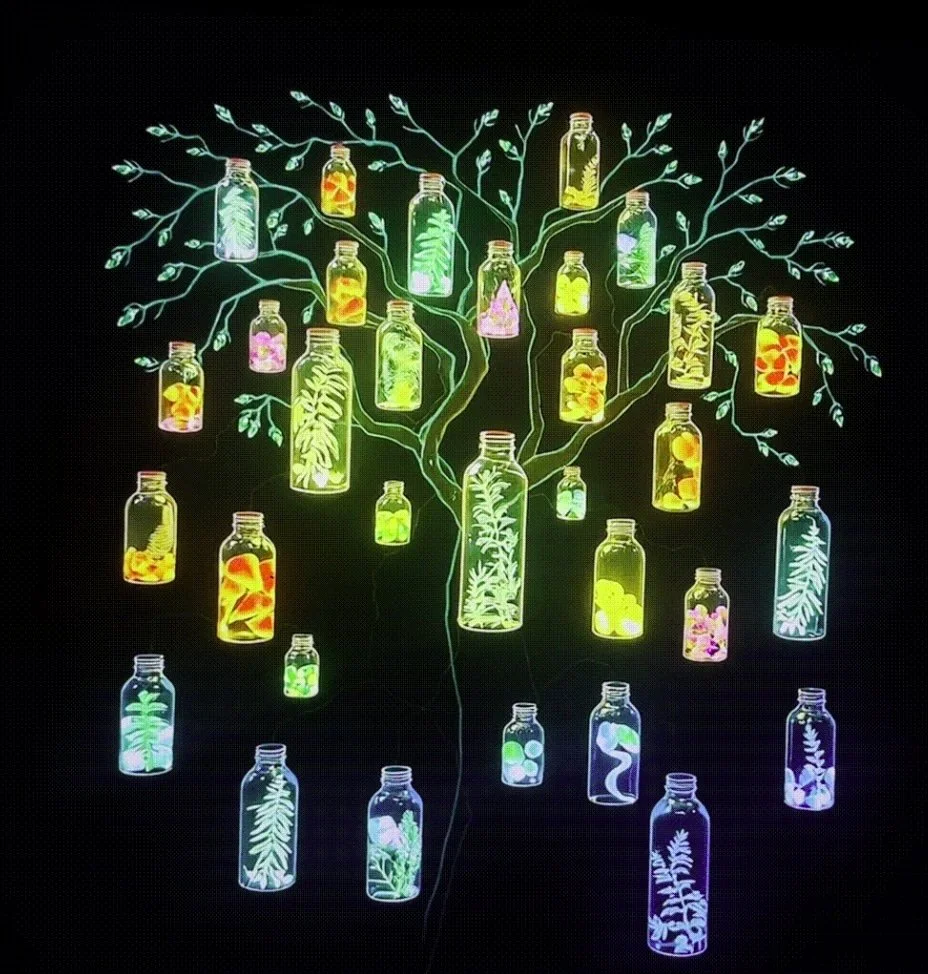
Echoes of Protection: Bottle Tree 2075
Echoes of Protection: Bottle Tree 2075 is a mixed-media digital installation inspired by the enduring legacy of Southern Black folk traditions, Hoodoo, and West African cosmologies. Drawing from the symbolic bottle trees prominent in southern gardens, the artwork reimagines the traditional blue bottles—believed to capture spirits and shield homes from harm—as luminous digital vessels against a darkened backdrop. Each glowing bottle contains rendered vignettes of preserved ecological memory, invoking both ancestral wisdom and visions of environmental stewardship in a speculative 2075. Through its synthesis of organic form, vibrant color, and immersive light, this piece honors the protective powers ascribed to bottle trees and proposes a future in which honoring nature is synonymous with honoring ancestry and community.
-
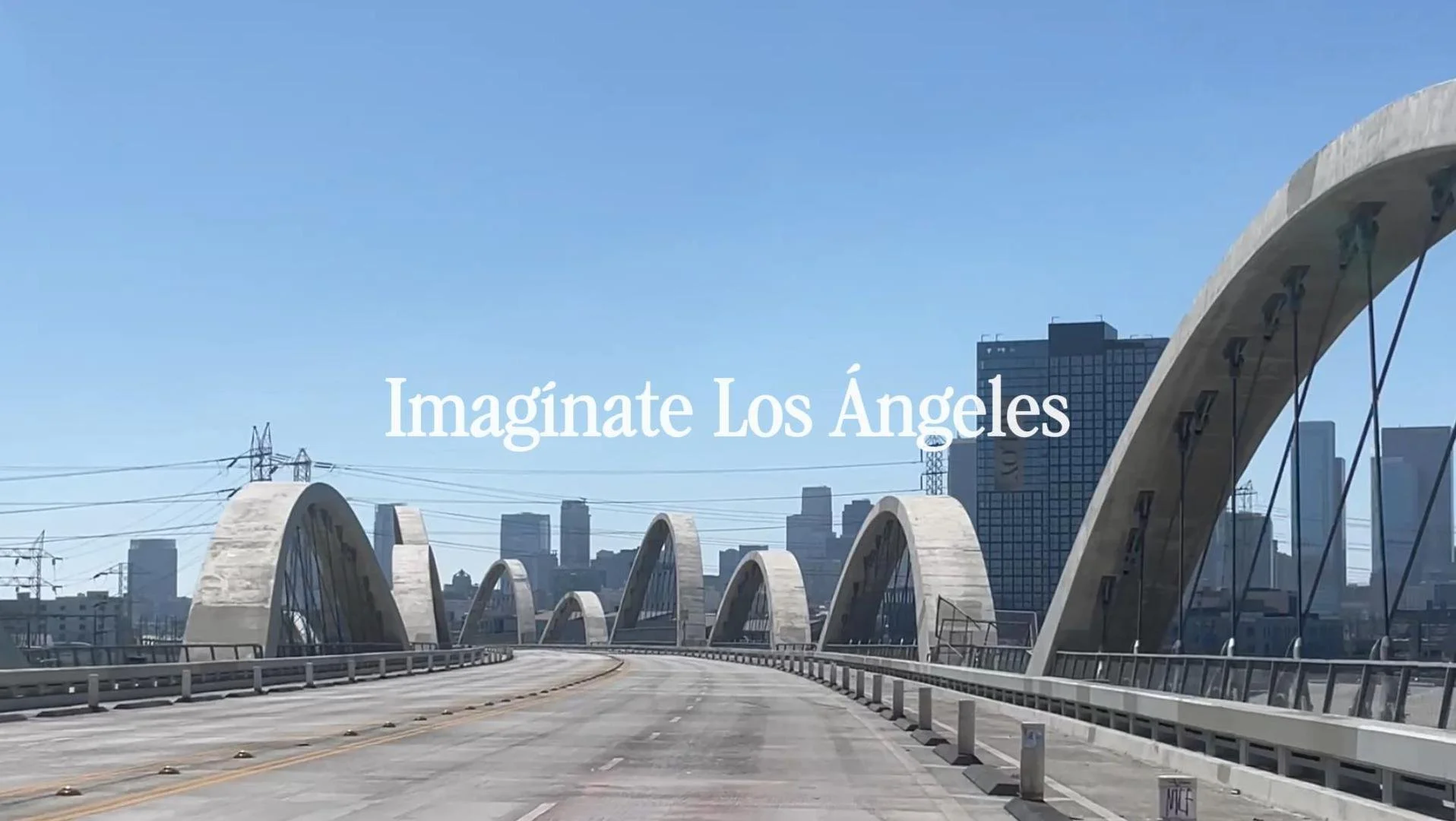
Imagínate Los Ángeles
Imagínate Los Ángeles is a short documentary in Spanish that centers on voices from the artist’s neighborhood. Through simple but profound questions–"Si pudieras imaginarte el futuro, cómo sería?" (“If you could imagine the future, what would it look like?”) and “Cómo imaginas el futuro climático o el medio ambiente?” (“How do you imagine the climate future or the environment?”)—the film invites everyday people to imagine and share their visions of the future. Their responses are compiled and accompanied by English captions to make it accessible to a wider audience.
The work not only documents spoken words but also captures the immediate environment of each interviewee. Storefronts, sidewalks, murals, and the environments of Los Angeles’ streets become part of the narrative, grounding each imaginative response within a lived place. This approach allows viewers to feel both the presence of the speakers and the community they live in. -

Astonishing Light
Shirene Shomloo’s “Astonishing Light" is a photographic meditation on the teachings of resilience from the desert through the lens of the Iranian diaspora. The artist draws on the inherited memory of the deserts of the middle east as home, transposing a trust between the land and the self built over generations to the deserts of southern california. These landscapes are at the frontlines of climate change, with rising temperatures and changing rainy seasons putting added pressure on already strained ecosystems. This scarcity of resources has developed within the habitat a bone-deep ability to adapt. In this photo series, the artist’s body is melded into the landscape, to embrace the topologies and the forms that have allowed flora, fauna, and native peoples of deserts across the world to thrive for thousands of years.
-
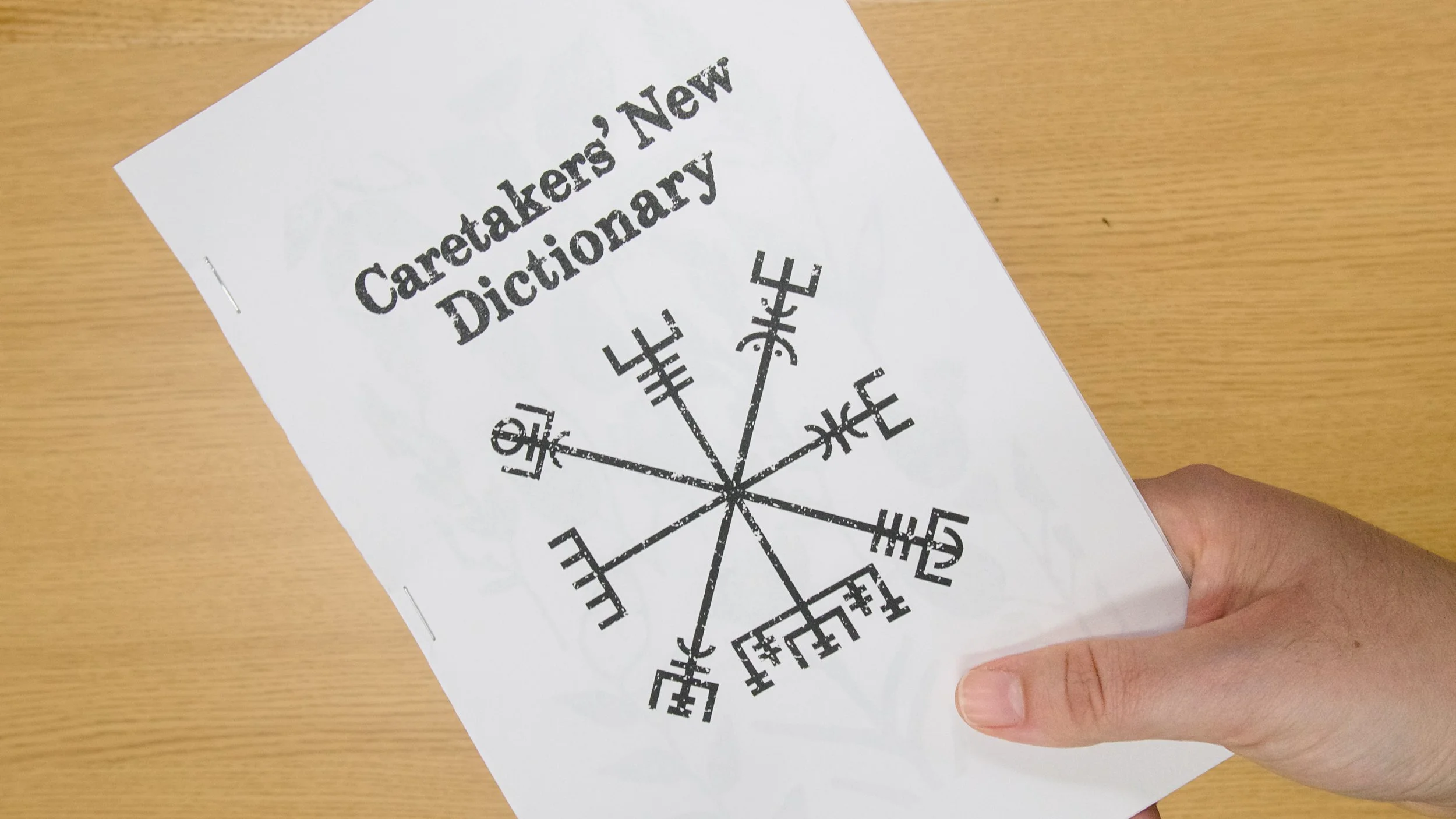
-

Colore
Surviving the climate crisis is a practice of world building. We build worlds in which our communities thrive and survive. Storytelling and science fiction play the role of making those worlds feel tangible and enticing. Colore is the story of two communities separated by time but experiencing crises that require a shift outside normal survival strategies. In Hallu in 2030, Amanya (or Ami) discovers a fungi that can help enable communication and goods transfer - allowing for the establishment of a mutual aid network. Forty-five years later in the same region, Quinton later rediscovers the network when a hurricane nearly wrecks his way of life. The story answers the question of how we might survive in a future where we face the crises of a collapsing ecosystem fueled by greed and extraction. It imagines nature and place based solutions as methods for survival. Lovinia and Robin contributed their imaginations to the story, each taking a community-world to build. Christine brings the story to life with vibrant images. This short story is a quick foray into what we hope is a hopeful future.
-
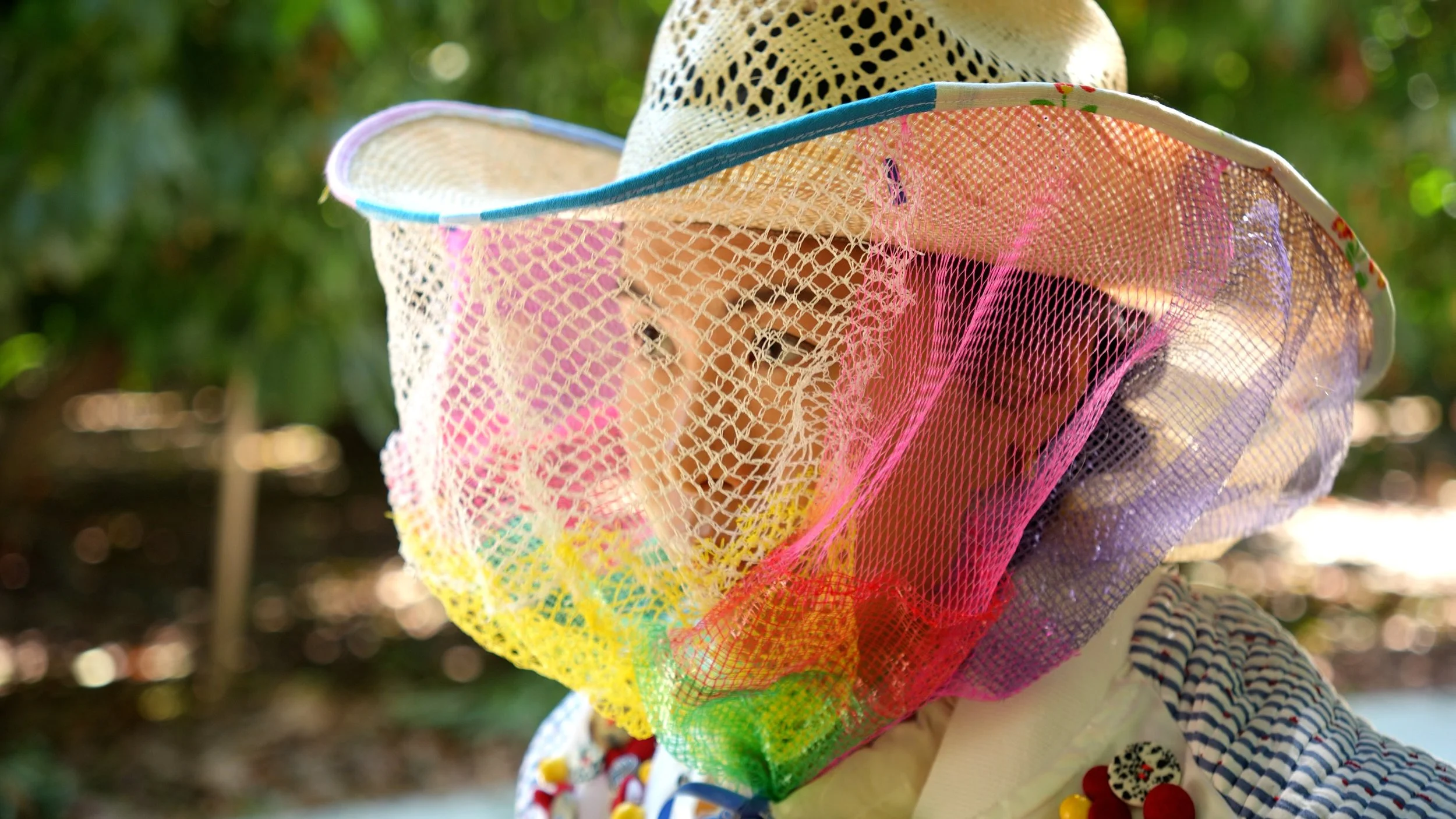
Farmer Armor
Farmer Armor draws on the visual language of artist Richards’ mixed Japanese and Filipino heritage—symbols like the Filipino flag, the Japanese red sun, hakama pants, and the straw hats worn by Filipino cowboys. These cultural references are woven into the imagined landscapes of California farms, where they meet subtle nods to Americana. The final silhouette of the work is grounded in over 80 hours of field research across several months, during which Richards interviewed agricultural workers about what they might wear in the future. Their stories and visions shaped a narrative that was brought to life using secondhand garments and reclaimed fabric. The result is a piece of speculative workwear—part fantasy, part lived experience. Each element of the outfit was built from reused materials, embodying a patchwork of memory, resilience, and imagination.
An accompanying video deepens the narrative, following a figure farming in a surreal, future landscape. Walking through avocado groves, they wear not just clothing, but the layered hopes and histories of today’s farmworkers.
-

KARTAng-Isip
Project KARTAng-Isip is an act of imaginative cartography, mapping the possible futures of the Philippines through the lens of climate fiction. Borrowing from kathang-isip (fiction) and karta (map), this anthology of short stories envisions the archipelago’s future over the next 50 years, exploring the diverse realities of each region.
The first story, Of Steams & Storms, is set in the Philippines’ Eastern Visayas in the year 2075. The region comprising Leyte, Samar, and Biliran stands at the heart of typhoon landfalls with its landscape cut by the Leyte Fault; however, after decades of disaster, the long-whispered myths of Biringan now emerge as a renewable energy utopia. Through the eyes of Paula, a young Biringan intern, the story follows Eli, a seasoned stormsaver, as they navigate a megatyphoon in a journey to reunite with a long-lost love. At the heart of this work is countermapping, a method of reclaiming space, voice, and vision. The Philippines, consistently among the most vulnerable countries in the world, is often depicted only through the lens of disaster. Project KARTANG-ISIP disrupts that narrative by charting a different map: one where Filipino communities are not merely victims of disasters, but changemakers.
-
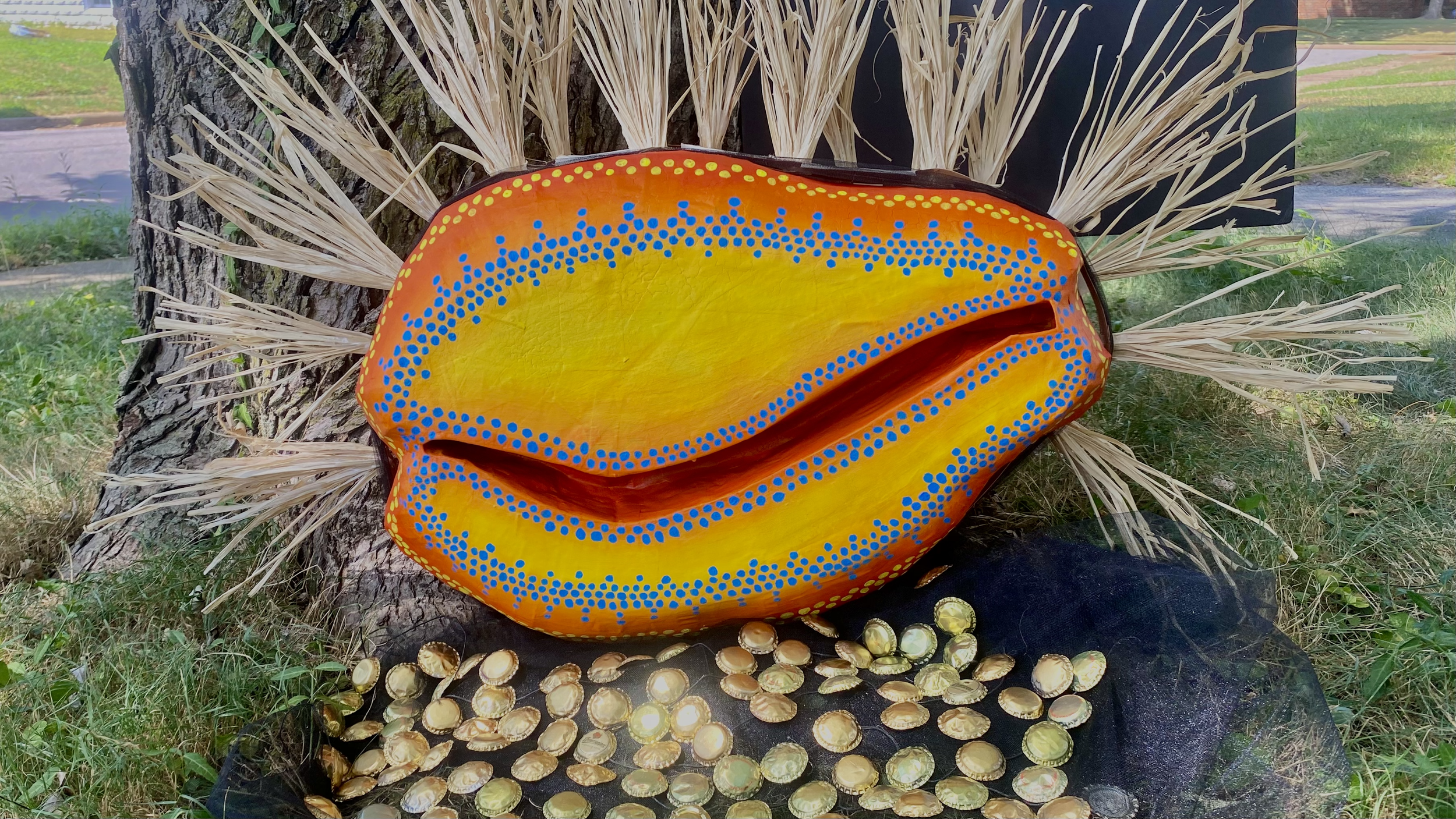
Litha
This West African inspired mask and accompanying garment venerates the body of the Cowrie Snail. Through traditions of dance and ritual across Africa, it is common for spiritual beings, deceased family members, and deities to be routinely remembered and honored. The Cowrie Snail’s history exploitation through commodification parallels that of enslaved African people around the continent amidst species endangerment from overharvesting, pollution, and other effects of tourism. This piece acts as a proposal to recognize the Cowrie as an ancestor, healing our related grief through movement and creativity. Using the motifs cultural significance as a symbol of abundance, this piece reminds us to honor our grief within oppressive capitalist systems that feed off of scarcity by remembering what is valuable to us as people. This way, we place our worth and those of living things around us as intrinsic rather than extrinsic, causing us to see ourselves and the world with more care. The future, regardless of the systems that run it, needs more routines that remind communities of their own values and commitments to nature. The artist believes that when these values are the foundations of a community, the world around us can change for the better.
Climate Storytelling 2075: Anthology Vol. I
-

american chestnut
Raissa Xie & Anjali Nair's “american chestnut” is an experimental multimedia collaboration combining poetry, dance, sound, and video. Central to the piece is a poem read in a soundscape, reflecting themes of growth, decay, life, multi-species interconnectedness, and embodying peace alongside community, grief and death.
Interdisciplinary designers and artists Anjali Nair and Raissa Xie create a window into a new world by engaging multiple senses. The embodiment of sound merged with video footage taken by Anjali and Raissa, aims to prompt viewers to be mindful of their own bodies on their journeys to heal in life, and beyond, with the more-than-human so that we might build new relationships to our environments and to one another.
-
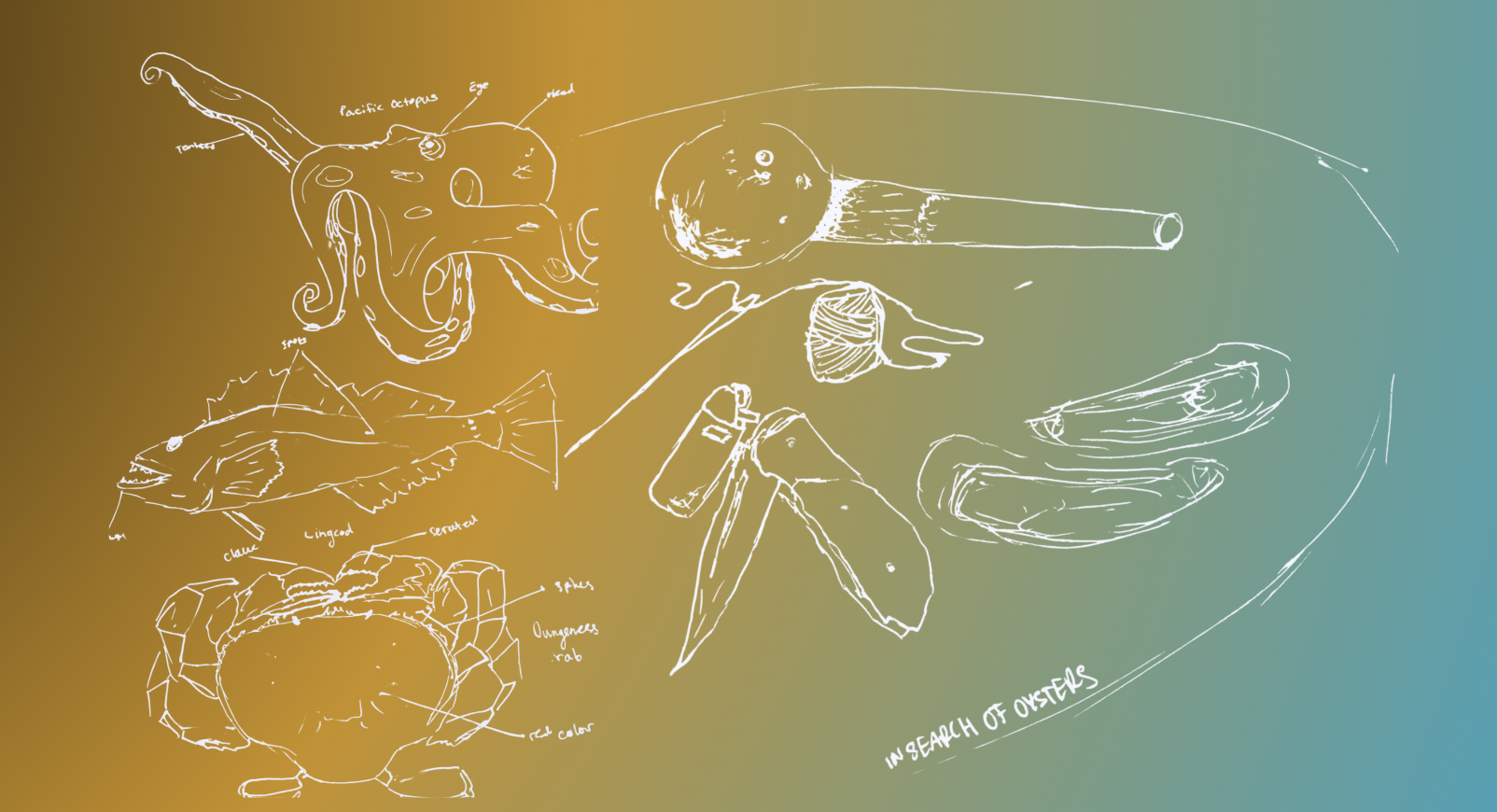
In Search of Oysters
Elijah Valerjev's “In Search of Oysters” follows a man who embarks on an existential journey in a submarine to collect materials for experimental carbon capture. Though the story is set in the year 2075, todays’ rapidity in technological advancements brings some realism to these science-fiction ideas. The short story is interwoven with a unique element of underwater exploration and environmental preservation that humanizes a climate future. Throughout this trip, the protagonist grapples with drug withdrawals, forced addiction recovery, and societal isolation while interacting with an AI companion. The narrative unfolds through a series of first-person journal entries, depicting a highly self-analytical perspective on what it means to be accepted. As he searches for carbon capture materials, he develops an evolving understanding of humanity. Paired with a modern take on his growing knowledge of old philosophical views, he confronts change in an absurd setting, viewing progress through his physical health and the manipulation of his surroundings.
-

renewssance
Kaila Akome's “Renewsance” provides commentary on the fast fashion industry through recycling imagery of the Renaissance movement. The piece – a mix of collage and tapestry – uses found material gathered from secondhand sources, and aims to utilize fabric that otherwise likely would be shipped to perish in African landfills overseas, polluting the soil and sea. Renewsance draws from imagery of the “Birth of Venus” by Sandro Botticelli. Here the woman featured has green skin and hair reminiscent of seafoam. Meant to represent an African setting, the work explores the idea of a future wherein through mindful consumption adaptation and reuse the cycle of waste the future poses an ecological future in harmony with nature. The renaissance movement is classified by imagery of elegance, purity, divinity, and often represented by elite or divine figures. However, Renewsance reflects on the lifestyle and consumption patterns of the modern day wealthy by portraying the remenants of abundance. There are two paths for the clutter that exists and continues to build: as a stream of waste that will pollute the planet, or as an opportunity for reuse and renewal.
-
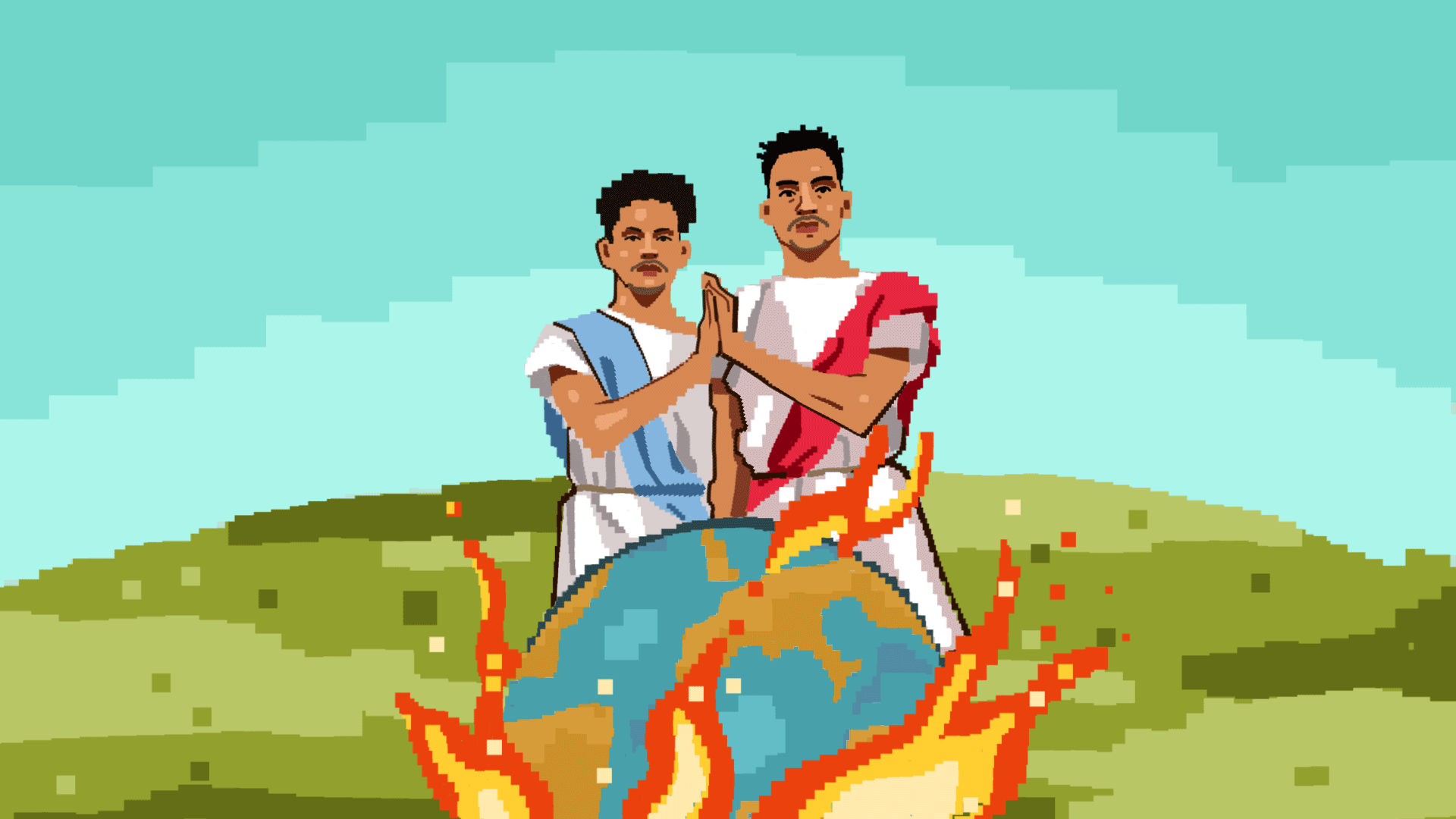
Atmosphere: Re-ignition Sequence
Cairo Croon's "Atmosphere: Re-ignition Sequence" is a five-song reimagining of his original album, “Atmosphere” released in 2021.
While the original album finds solace and content in death and in the afterlife, Re-ignition Sequence takes a hopeful look toward the future. There is an implication that the work of reconstruction and sustainability is brutal and will require everything we have - our very lives - but will ultimately lead to a better world for our children.
The centerpiece of Re-ignition Sequence, Casanova, is where all the concepts of the album - love, loss, queerness, revolution, death and fear, merge into a fluffy and contemplative 3 minute track with an accompanying visual.
-

Over the Years
Olivia Zhang's "Over the Years" is a multimedia artwork that explores data visualization as an avenue for climate storytelling. Inspired by the role of location: how we interact with each other, with our histories, and with our environment, this artwork features a timelapse of projected flooding from sea level rise up to 10 feet in the Everglades in South Florida, a line graph of sea levels off the coast of Southeast Florida from 1994 to 2023, overlaid with a personal portrait. Accompanying these visuals is a short poem that delves into the artist’s personal fears and hopes regarding the escalating climate crisis. Through this fusion of data visualization and intimate self-expression, the artwork seeks to humanize the often impersonal nature of climate science, making the pressing issues of environmental change more relatable and emotionally resonant. By intertwining the stark realities of climate data with the deeply human response to our uncertain future, "Over the Years" transforms abstract visuals of “change for the worse” into a narrative that speaks to both urgency and our shared humanity.
-
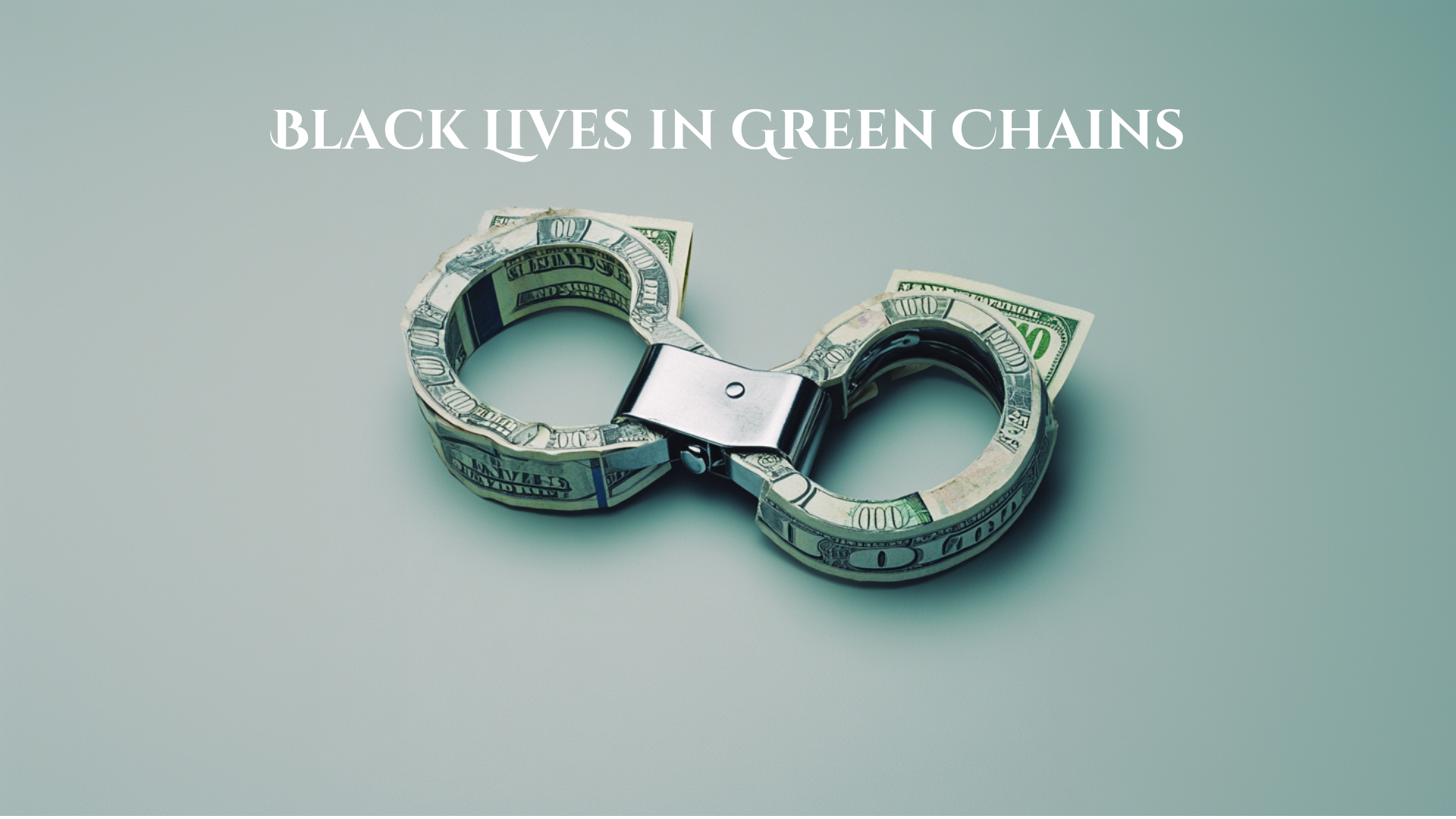
Black Lives in Green Chains
“Black Lives in Green Chains'' delves into the violence built into the contemporary urban environment of Wilmington, Delaware, drawing attention to how the traumas of living in a high-risk inner city can foreshadow imprisonment, pain, and loss. This work also acts as a call to action for a naturalized, demilitarized, and humanized environment for Wilmington’s future. The artist led an ethnographic survey to gather insights from students, community leaders, police, and more; these insights were translated into a song reflecting deep-seated anger and multifaceted critique, underscoring a need for change. Through original music written, produced, and performed by the artist (with a feature from Yung Raylo, a collaborating vocalist), and a written opinion editorial that captures archival evidence of Wilmington’s urban violence and the community response to it, “Black Lives in Green Chains” not only explores the multidimensional contributions to Wilmington’s gun violence crisis, but proposes critical solutions that can pave a path away from it and toward a greener future.
-

Toposomatic Inheritance
Laken Sylvander's “Toposomatic Inheritance” offers a material approach to future inheritance of place and body through the construction of garment. The Black Mountain Toposomatic Coat (topo - place, location; soma - body) is an experimental garment meditating across constructions of heritage, colonial ancestry, environmental violence under capitalism and 'rights' to place through private ownership and inheritance. It is accompanied by a poem from the vantage of the artist passing the coat down to future inheritors - not inherently biological descendants - in the year 2075, recounting her own memory-keeping of the land and speculatively addressing how ownership and collective stewardship have changed across her lifetime. “Toposomatic Inheritance” reminds us that we link place with body all the time - coordinates and maps are tattoo’d on our skin, we wear gemstones (harvested from near and far) in our ears, around our necks and fingers. Too often, contemporary people are far removed from the places that make our everyday Earth lens: our clothing.
-

Morir Soñando
Robert J. Dellinger's “Morir Soñando” transports us to decolonized Quisqueya (formerly the Dominican Republic) in the year 2100. Here, an Abuelita weaves together tales of cultural movements and collective awakenings that spanned the world and stirred the hearts of the sleeping dreamers. Named after the traditional Dominican drink, which translates to “to die dreaming,” this narrative highlights the cultural significance of imagined futures, the passing down of knowledge from generation to generation, and the awakening of an “unconscious” culture in the pursuit of a dream. The drink’s simple ingredients—orange juice, milk, and sugar—reflect the harmony achieved by blending seemingly incompatible elements through the bonds of sugar.
-
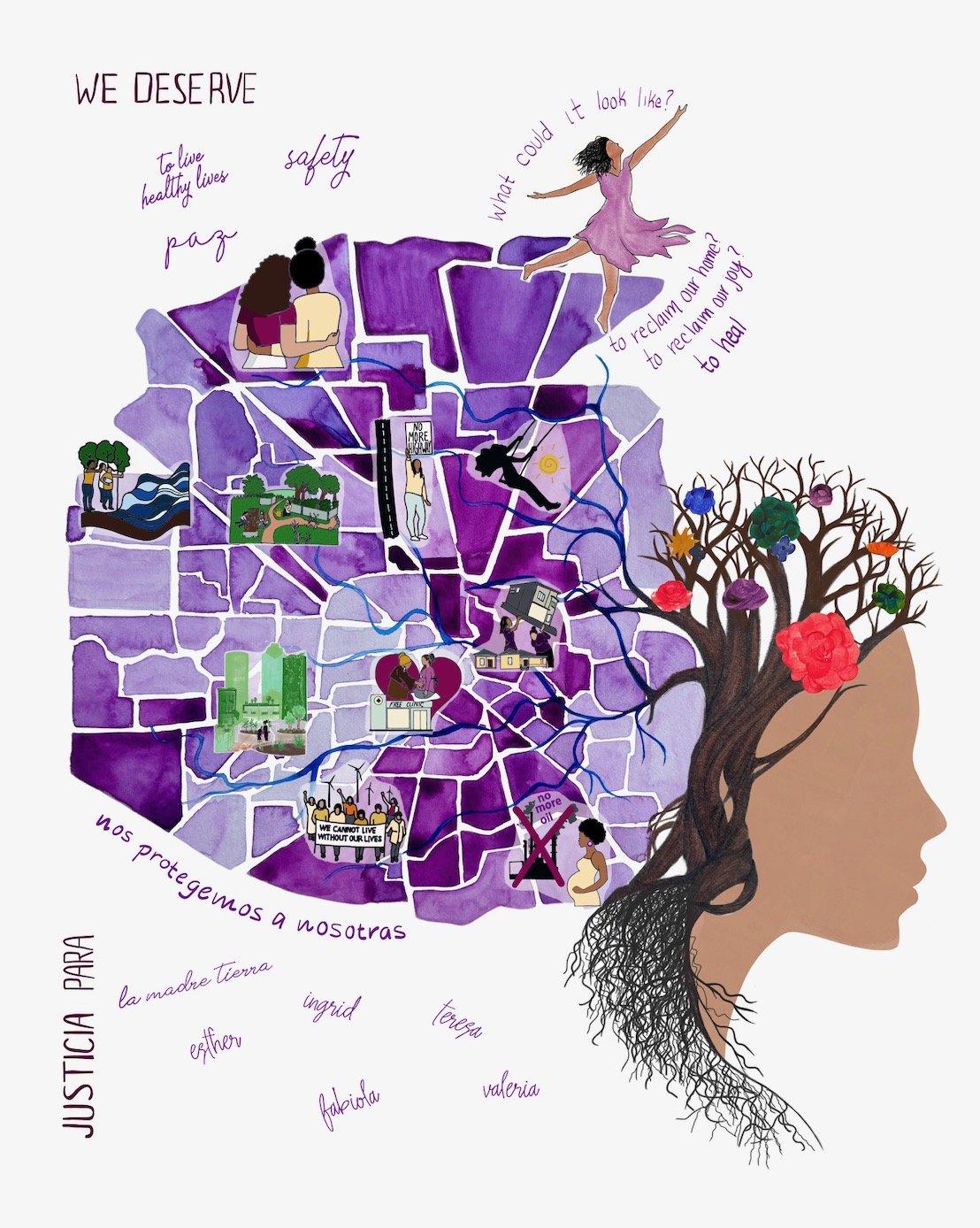
Resistencia y Alegría
Asenette Ruiz’s “Resistencia y Alegría” intertwines themes of reproductive and environmental justice through a dynamic visual lens on Houston, TX. This visual underscores the potential of place as a site of injustice (on land, on women) but also a site of healing and joy. With a nod to the power of women in justice movements, particularly the Ni Una Menos movement in Latin America - reflected in the purple color scheme which often show up in protests against feminicide - the work draws connections between Houston’s large Latine population and ancestral roots, and the power that comes from those places and collective action. By highlighting both the challenges and moments of jov and empowerment in our present, “Resistencia y Alegría” invites viewers to consider what a continued struggle for both environmental and reproductive justice look like in our future, and how to embrace resilience in alignment with nature to build that just future.
Volume II storytellers:
Climate Storytelling 2075


Volume I storytellers:
Latest updates from Climate Futures Studio
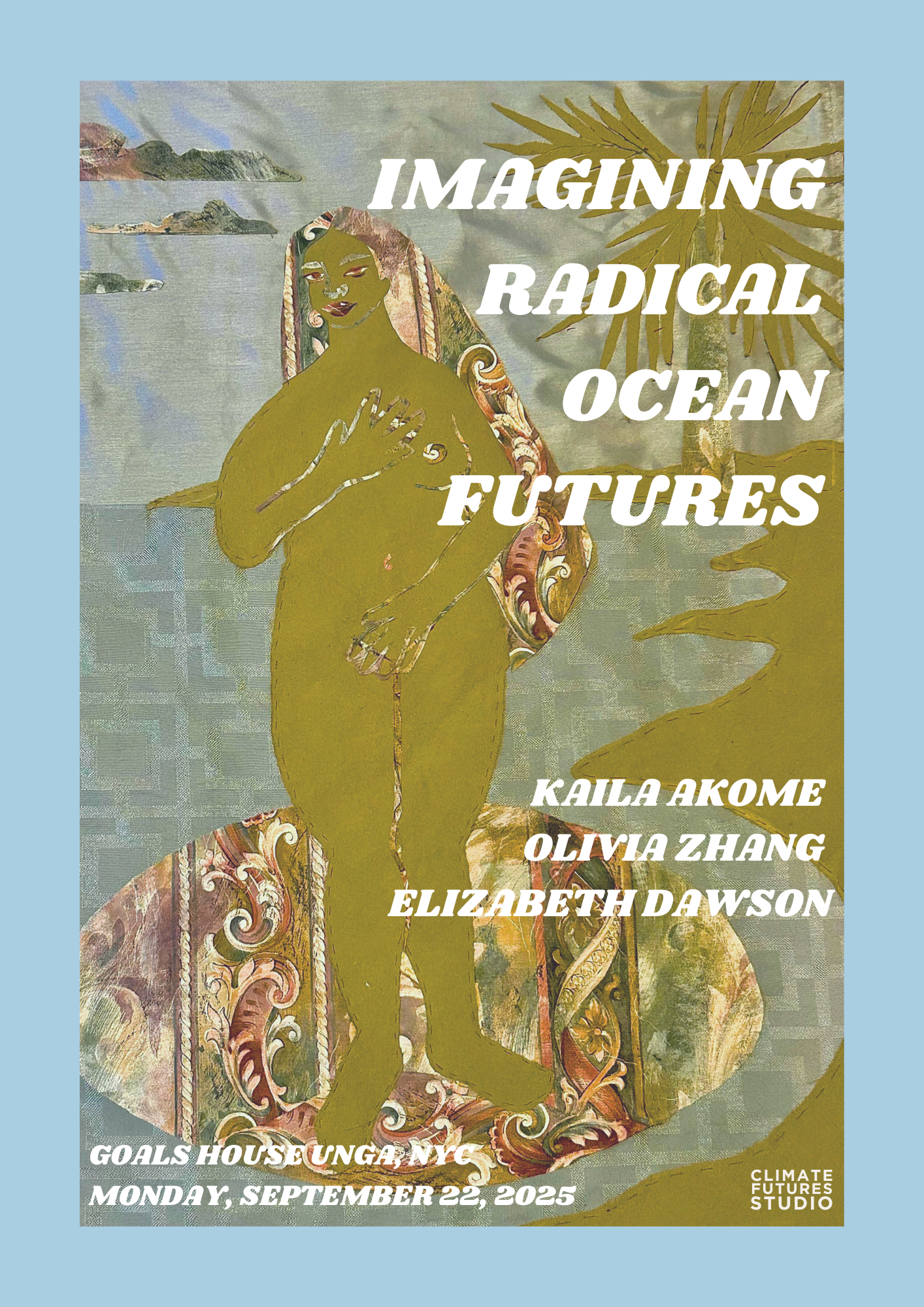
Follow us @climatefutures.art








Imagining Collectively
Does this anthology inspire your own storytelling?
Do you dream of, and/or contribute to, significant climate wins in your lifetime?
Want to help make this work grow?
We are seeking artists, climate thinkers, partners, visionaries, and storytellers for future cohorts, collaborations, and more.
Please contact us using the form below.



